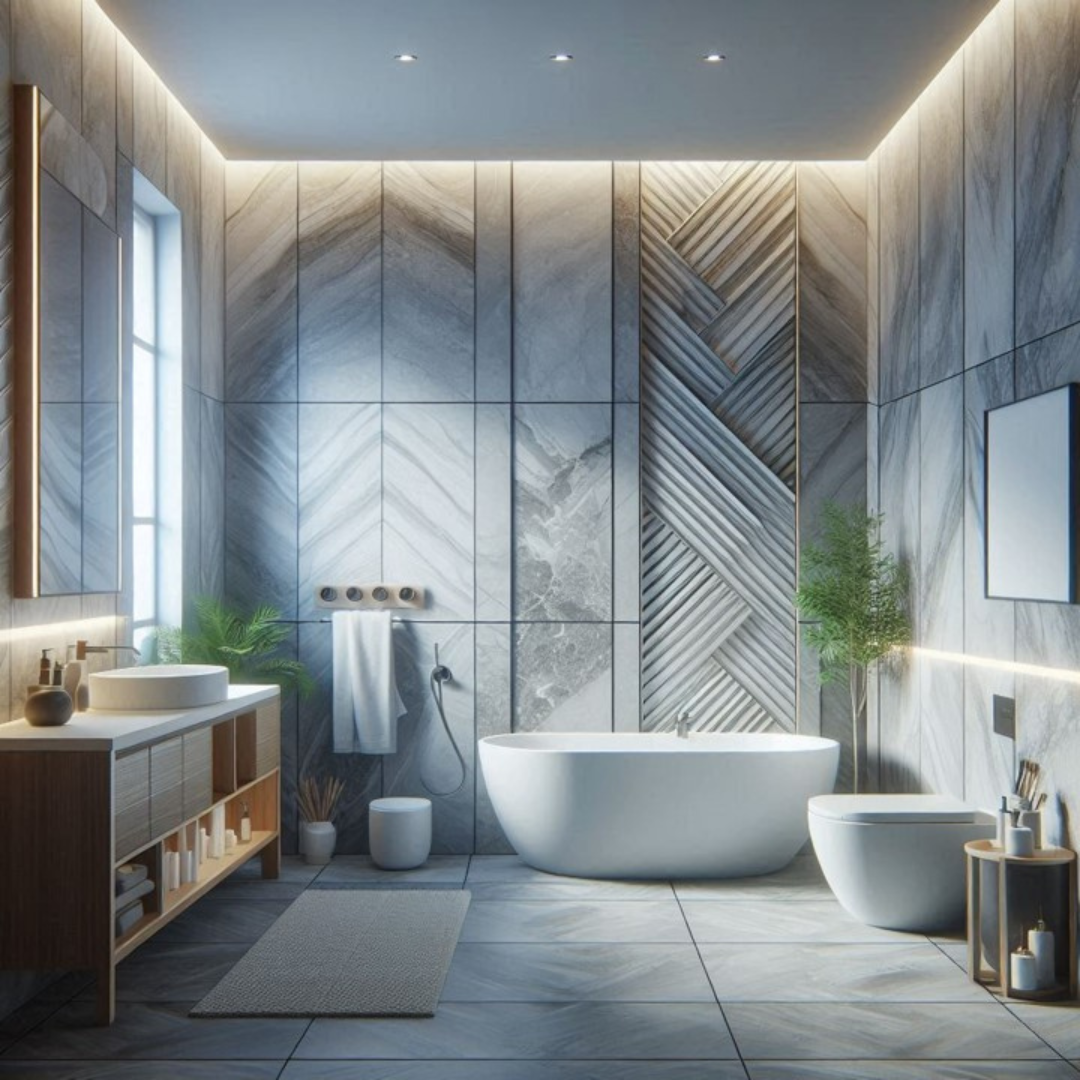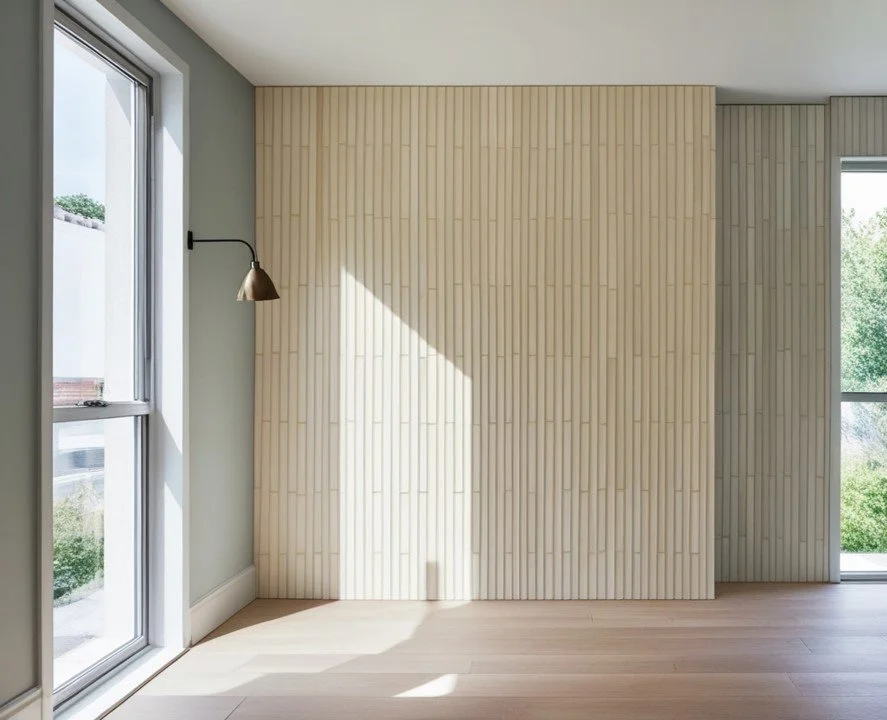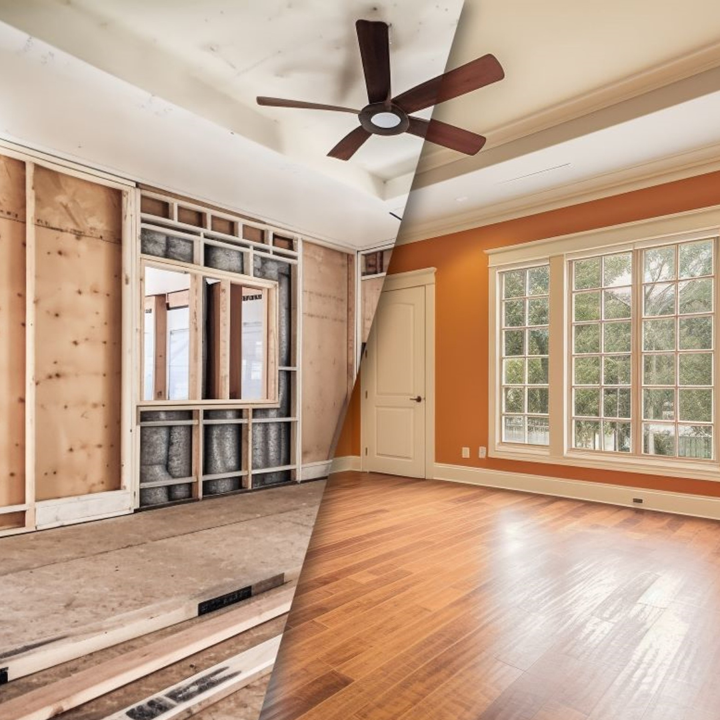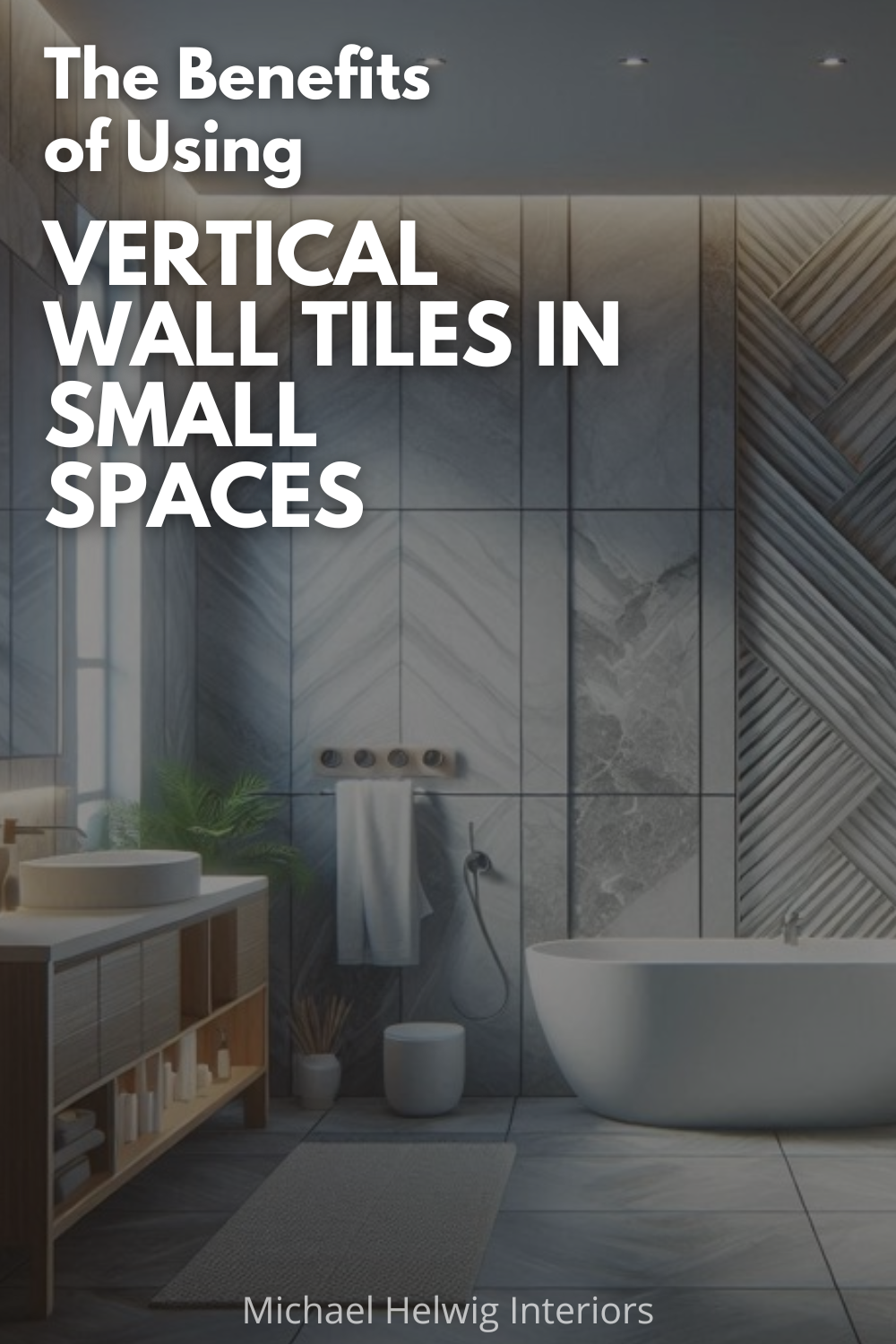Decorating small spaces isn’t always easy. There always seems to be challenges in your journey to making them feel larger and look better. One reason for this is that smaller spaces, be it the bathroom, kitchen, or hallway, often have difficult or tricky layouts. Small bathrooms, for example, can lack storage, and depending on the decorating choices you make, can feel even smaller than they are.
The norm in many bathroom interiors has been to lay tiles horizontally. It’s almost an automatic orientation because it aligns with horizontal surfaces like floors and countertops. Laying tiles this way draws attention to the width of the room and the result is a space that can look wider.
However, the actual ceiling height doesn’t change no matter which way you orientate the tiles. If the room is extra tiny, horizontal tiles can highlight the limitations of the space. The ceilings will feel lower and the space constrained. This isn’t what you want, is it? Instead, I’ll bet you’ll want to create the feeling of openness and airiness, right?
So, if you want a bathroom that feels taller, you may want to go for vertical tile installation. The result is a positive alteration of the room's dimensionality. In other words, it won’t feel as compact as it is. But this isn’t the only good thing about vertical tile installation…
1. Enhances Perceived Space
Vertical tiles essentially draw the eye upward. This way, the walls feel taller. And therefore, the small space will feel larger.
Take the example of a tiny bathroom with vertical shower tile. It psychologically feels taller whenever you step in it. In the same way, if you install vertical tile on the backsplash of a narrow kitchen, the space above the counter looks bigger than it is too.
The idea of making small spaces seem taller doesn’t only apply to homes. You can translate this “trick” to commercial settings where the aim is to make the customer feel comfortable, so their perception of the space is favorable.
For instance, a boutique coffee shop can make use of vertical wooden tiles to expand its limited space visually. And the clients coming to drink and dine will talk about how the space feels more open and welcoming.
It's important to note that the size of the vertical tiles also matters. Larger tiles create an illusion of space, making smaller rooms feel more open. That’s because a larger format tile has fewer grout lines and a larger surface area. Couple that with the vertical orientation, and you’ll create a less interrupted, and more visually open appearance.
Also, a survey found that 59% of people prefer large format tiles for their elegance and low maintenance. However, installation can be tricky in tight corners or smaller sections. Smaller tiles, on the other hand, offer more flexibility but can make a bathroom feel cramped if not expertly installed. (1)
2. Maximizes Light Reflection
For a brighter bathroom, glossy and lightly colored vertical tiles are perfect because they reflect light.
For small spaces, natural light is often limited. Even if you were to install big windows, they can only be as big as the width of the wall exposed to the outside. Installing vertical tiles with reflective surfaces ensures light bounces off generously around the room, much the same way mirrors do in smaller or dark rooms.
A good approach is placing the vertical tiles strategically to work harmoniously with the light sources. Consider installing the tiles next to or opposite windows, or just below overhead lighting fixtures.
For example, when you install light-colored vertical tiles on the wall opposite a single window, you can multiply the effect of natural daylight entering the space.
3. Versatility in Design
Vertical tiles come in many designs, textures, and colors, offering lots of options to match any decorating style. Whether you’re going for a modern look with sleek, minimalist tiles, a classic feel with detailed patterns, or a rustic feel with textured tiles that mimic natural materials, vertical tiles can meet these aesthetic needs.
Before choosing, consider both the room’s function and existing decor. For bathrooms and kitchens, choose durable, moisture-resistant tiles that complement the fixtures and cabinetry. In living rooms, choose tiles that add a visual statement but also harmonize with the overall interior design.
4. The Practical Benefits
Vertical wall tiles aren't only stylish, they also offer practical advantages. They’re easy to maintain, durable, and moisture resistant, which makes them ideal choices for high-use or damp areas like bathrooms and kitchens. All you’ll need is a cloth and some elbow grease to clean them.
When compared to other wall coverings, like paint or wallpaper, tiles have them beat in terms of longevity and upkeep. Paint can chip and fade, requiring touch-ups, and wallpaper can peel or discolor in humid rooms.
Tiles, on the other hand, require minimal maintenance beyond regular cleaning and are resistant to the typical environmental stresses that degrade other finishes. This makes them an excellent choice for both residential and commercial applications.
5. Space-Saving
Installing tiles vertically in spots like your kitchen backsplash or bathroom shower walls can leverage the height of the room, drawing the eye upward to create a sense of expansion.
To enhance this vertical theme and maximize spatial efficiency, incorporating complementary fixtures and furniture that echo the upward movement can be very effective.
For example, tall, slender cabinets or floating shelves can be aligned with vertical tiles to maintain a consistent, streamlined look.
If there is one surefire way to increase the space in any room, it’s by using the verticality of the room.
When you strategically use your room’s height for storage and organization, you gain valuable space in other ways. Suddenly, the stuff that was spread out, taking up room on counters, in corners, or in piles here and there, is now contained in your tall cabinets, using the height of your room to keep your stuff in check. The result is a much more optimized space.
Some Tips for Enhancing Vertical Tiles
Install smart lighting to further enhance the reflective properties of vertical tiles.
For instance, you can install adjustable LED lights to maximize light reflection. People naturally feel more comfortable in bright spaces as opposed to dim and gloomy ones.
There are many tile materials you can use for small spaces. But it’s important to understand that they're not all the same in terms of what they offer.
First, ceramic tiles- which are popular because of their durability and wide range of colors and textures, statistics show their market is predicted to grow with a compounded annual growth rate (CAGR) of 6.7% from 2020 to 2027.
Other great options include porcelain tiles, which are also resistant to moisture, and stone tiles, which bring natural beauty. (2)
Another crucial thing is to seek advice from design professionals.
You may have an idea in your mind but may not know exactly how to execute it. Interior designers can offer suggestions to make your vision come true while considering the practicality of the installation.
Tackling tile installation yourself is certainly possible, especially if you’re a hands-on person. However, if you prefer to leave it to the experts, expect to pay labor costs anywhere from USD$4 to USD$32 per square foot. (3)
Last, visit your local showrooms to see the different ways vertical tiles can be installed. You’ll get inspiration and a clearer visual understanding of how vertical tiles could transform your space.
Conclusion
Vertical wall tiles have a ton of aesthetic and practical benefits. They’re a perfect choice when your goal is to change how small spaces feel. Vertical wall tiles create the illusion of height, maximize light reflection, and are available in many designs to suit any decorating style. Best of all, they’re durable and easy to maintain, making them a great choice for areas with high use and moisture.
References
1. “Industry Association Reveals Top 2023 Bathroom Design Trends,” Source: https://www.forbes.com/sites/jamiegold/2022/10/28/industry-association-reveals-top-2023-bathroom-design-trends/
2. “Global Ceramic Tile Industry Statistics: Market Projected to Reach $120.16B,” Source: https://worldmetrics.org/ceramic-tile-industry-statistics/
3. “Cost To Install Ceramic Tiles (2024 Guide),” Source: https://www.thisoldhouse.com/flooring/reviews/cost-to-install-ceramic-tiles
Read Next:
Optimizing Your Space for a Successful Interior Makeover
Looking to make the most of your home’s rooms? These practical tips for decluttering, organizing, and arranging furniture are exactly what you need to create a home that reflects your style and feels inviting. From smart storage solutions to perfect lighting and color choices, this guide helps you transform any room into a functional and personalized space.
Join the Fun!
If you enjoyed this post and you want to keep seeing my weekly blog, the best way to do that is to subscribe.
You can subscribe by downloading my 11 Secrets Only Designers Know to Make Your Space Rock. If you’re curious about how decorators and designers make a home look magazine ready, you’ll love taking a gander at these 11 secrets. You’ll learn how to style your room from the floor up and it will work for ANY space you have.
I write about small space design and decorating, sustainable furniture options, positive self care and a variety of do-it-yourself home décor.
I’d love to connect with you!
“Michael Helwig was top-notch, very professional and responsive to my needs. He allowed me time to explore ideas and try out a variety of combinations until we found the perfect fit. Michael provided detailed information and offered beautiful ideas to make my dream living room become a reality. The furniture he sourced has totally transformed my living room space. Everyone that has seen my new living room has one word, WOW! A special thank you to Michael for a wonderful experience.”
“Michael was very knowledgeable and guided us, with great patience and good humor, through the process of designing our dining room and helping us find the perfect sleeper sofa. He offered really helpful advice when we asked questions - which was often - but at no time did we ever feel pushed. He helped me when I felt like I couldn’t make one more decision. When my new furniture finally arrived I realized everything down to the pillows was perfect. I couldn’t be happier!”
Samantha Hughes is a seasoned interior designer and DIY enthusiast with over a decade of experience in bathroom renovations. Specializing in tile layouts, Samantha provides practical advice to homeowners looking to transform their spaces. Her insights help readers create functional, stylish bathrooms with ease.

















